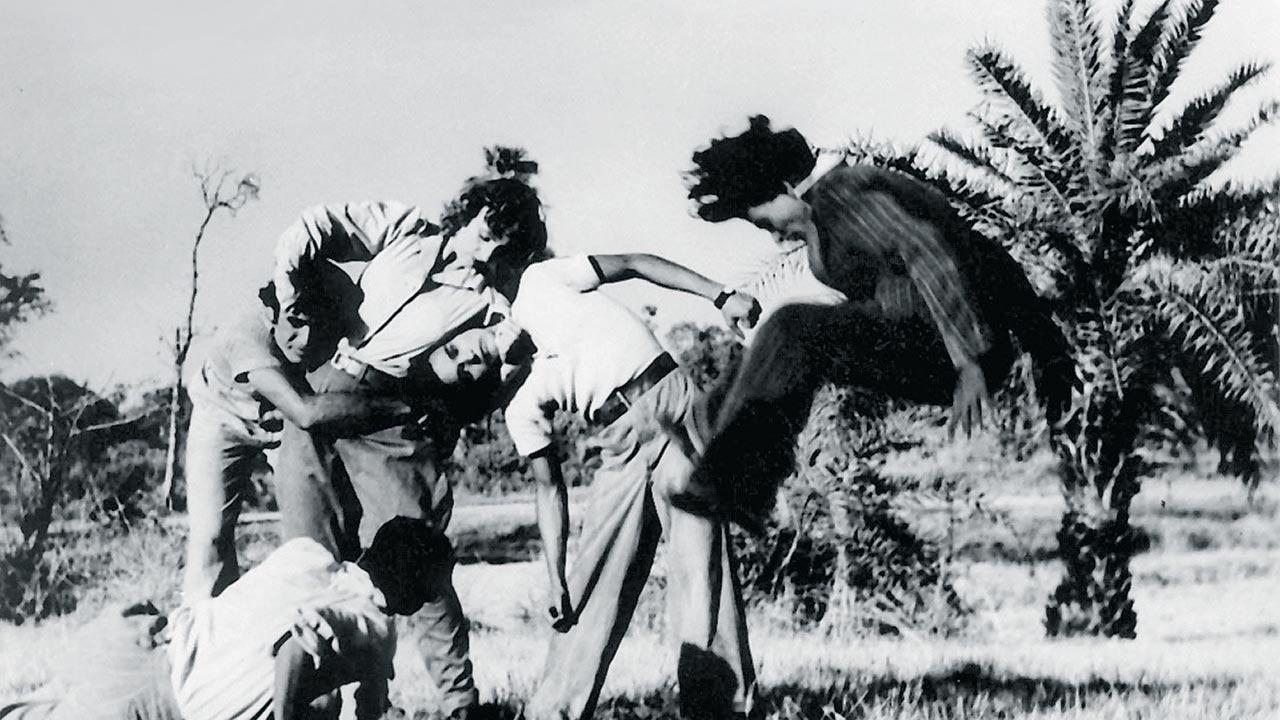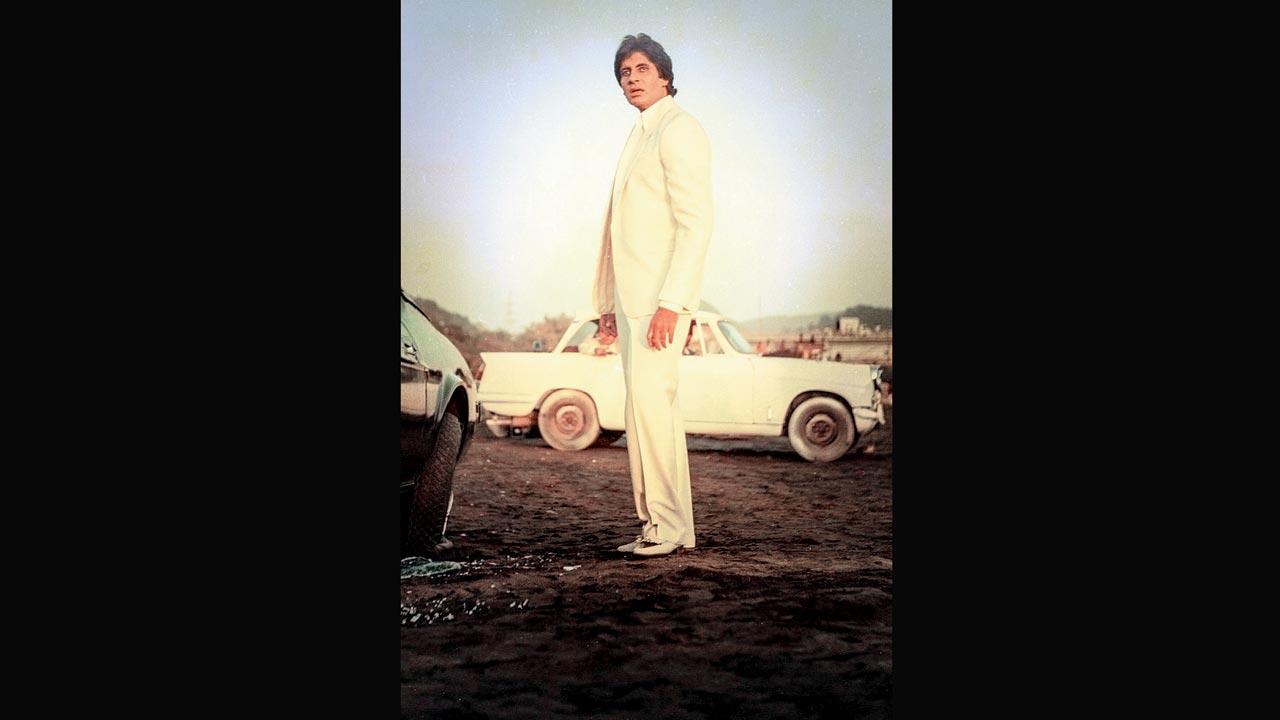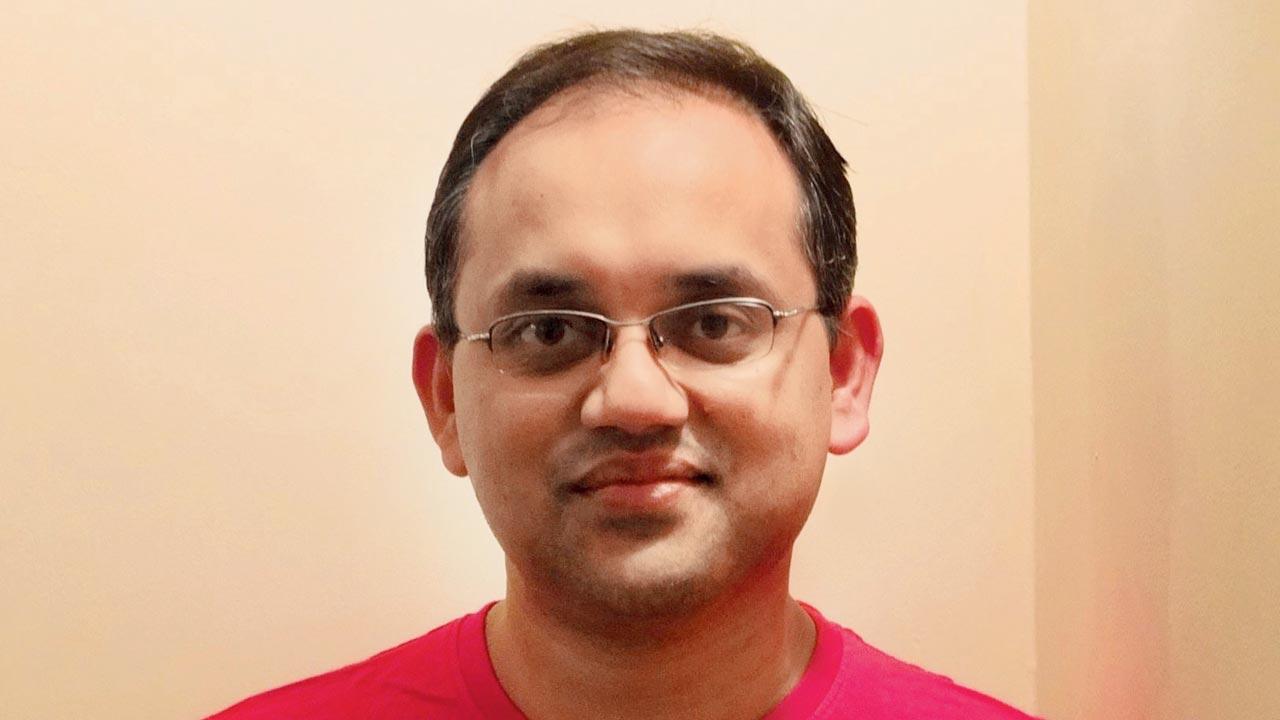Did you know Amjad Khan was not the first choice for the role of Gabbar Singh? A new pocketbook series spills more such trivia

Fearless Nadia (second from left) was probably the first actor to play twins separated at birth in a Hindi film, in Muqabla (1942), the trope later reprised by Dilip Kumar, Hema Malini and Sridevi among others. Pic Copyright Wadia Movietone/Roy Wadia
In the original scheme of things, Danny Denzongpa was supposed to play Gabbar,” reads the entry on Gabbar Singh in marketer and writer Diptakirti Chaudhuri’s The Bollywood Pocketbook Series (Hachette India; Rs 999). Film scriptwriter Salim Khan’s father Abdul Rashid Khan was a Deputy Inspector General of Central Provinces in pre-independence India and among the stories he told of Chambal’s dacoits to his son was of one named Gabbar Singh who would cut off the ears and noses of the policemen he captured, the name and gory details staying with the would-be screenwriter of one of Indian cinema’s most iconic films. “Every chapter starts with a story and often, it is a very obscure aspect of a popular story,” Chaudhuri tells us of his series, made up of four books dedicated to the 50 most iconic characters, dates, places and objects in Hindi cinema, its format a nod to the popular childhood game Name Place Animal Thing. Similarly, he cites, while most know of Dadasaheb Phalke making Raja Harishchandra, he was not the only one making films in India at that time, pointing to one Baburao Painter. He unlike Phalke who imported a camera, made his own, and was also involved in the first recorded instance of censorship in India.
ADVERTISEMENT
 Amitabh Bachchan as Vijay Dinanath Chauhan in Agneepath where for the first time since Reshma Aur Shera, he didn’t speak in his signature baritone. He created a rasping voice modelled on that of Tamilian don Varadarajan Mudaliar
Amitabh Bachchan as Vijay Dinanath Chauhan in Agneepath where for the first time since Reshma Aur Shera, he didn’t speak in his signature baritone. He created a rasping voice modelled on that of Tamilian don Varadarajan Mudaliar
“While working on a book on the history of Bollywood, I realised that there are many stories and points in time that probably don’t merit a long chapter but are interesting nonetheless,” explains Chaudhuri, who was also inspired by regular social media reminders of film anniversaries. While the small number of 50 understandably posed a challenge of selection, the very fact will also, he hopes, create a revelatory process for the Bollywood fan while its short chapters will serve as a good point of entry for the newly initiated. Momentous films like Sholay, Dilwale Dulhania Le Jayenge and 3 Idiots selected themselves; for others like Achhyut Kanya, he learnt that Nehru was invited to watch the film, drawing a lot of press, and this became a turning point in its life. “The series includes elements that are not just about a film’s release, but also about when a film came into popular consciousness.”

Among Chaudhuri’s own favourite nuggets is one about how in the song Mera kuch samaan from Ijaazat, Gulzar had written Ek sau solah chand ki raatein (116 moonlit nights). Many years later, he found out that he had in reality written lyrics for 116 songs that RD Burman composed. Another is about how Fearless Nadia was probably the first actor to play twins separated at birth in a Hindi film, in Muqabla (1942), the trope later reprised by Dilip Kumar, Hema Malini and Sridevi among others. Moreover, the fun part of the series, he points out, “is that since these are four books, something you miss in one will appear in some other form in another book.” So, he elaborates that while Shah Rukh Khan’s character in DDLJ, although iconic, is not part of the characters book, the film turns up in the discussion on the Swiss cowbell in his book on iconic things.
Apart from his own incessant cinephilia, books and inputs of fellow film fans like his own mother, time spent at the National Film Archives in Pune poring over trade magazines of the ’60s, ’70s and ’80s was part of the research for the series, the latter offering up information like how RD Burman, a relative newcomer, got to compose for Teesri Manzil. “At the time, most trade magazines talked about box office reports and top stars; it was never about writers, editors or composers, so it was a big deal for a newbie composer to create music for a film which would star Shammi Kapoor who was very successful,” observes Chaudhuri.
 Among the trivia the pocketbook includes are details about Do Gaz Zameen Ke Neeche (1972), purportedly India’s first horror film which kickstarted the Ramsay juggernaut, and Lux soap’s first Indian endorser Leela Chitnis. Pics Courtesy/Diptakirti Chaudhuri
Among the trivia the pocketbook includes are details about Do Gaz Zameen Ke Neeche (1972), purportedly India’s first horror film which kickstarted the Ramsay juggernaut, and Lux soap’s first Indian endorser Leela Chitnis. Pics Courtesy/Diptakirti Chaudhuri
So does the author consider an updation of the books in another 10 years? “When I was putting together this series, my abiding thought was whether it would last,” he says. “When you speak of a film like Lagaan, now 21 years old, you are fairly certain that it has stood the test of time. But with more recent films, you are not sure whether they will become legendary 10-15 years from now. I would consider redoing the list, but wouldn’t change the number 50. If something has become major, it should come at the cost of something else. That then would become the true test of its iconicness.”
 Subscribe today by clicking the link and stay updated with the latest news!" Click here!
Subscribe today by clicking the link and stay updated with the latest news!" Click here!







